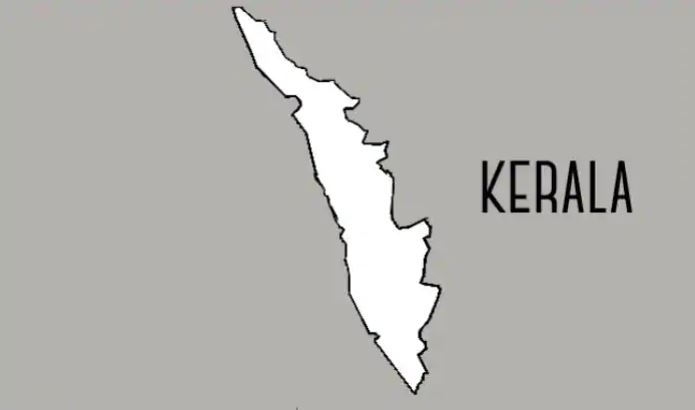
That Kerala has been often quoted as a “model state” is a fact. Based on many metrics, many economists and social welfare analysts have often singled out Kerala for its high per capita, the higher literacy rate, their land reforms, higher life expectancy, lower infant mortality etc. In essence, its better social infrastructure has been its key selling point as a “model state”.
Wikipedia has a whole page dedicated to the “Kerala Model”. There is also a segment which reproduces an opinion which says that it is the world’s most sustainable model. This write up seeks to look at how the COVID-19 is a serious threat on the State’s economy, which in turn can cause considerable strain on the social infrastructure of the State, and the “Kerala Model” may not be the same in the periods to come.
When one thinks of Kerala one is reminded of the famous tagline “God’s Own Country”, which it is truly. Filled with natural landscapes which are beautiful and magical, a trip to Kerala will have great takeaways in the form of wonderful memories. The next thing that one is reminded of Kerala is its spices and agricultural exports. Kerala’s share in the national output on many agricultural products is pretty high. For a tiny state (ranking 23rd in terms of Area; and 13th in terms of Population), its economy appears to be pretty solid.
When we look past this information and try to figure out the key drivers of Kerala’s economy, we would find that Kerala’s economy is not driven entirely by domestic economic activities. It has a significant support in the form of foreign remittances.
Kerala contributes to over 10% of overall foreign remittances to India, approximating to $12 billion per annum, which based on today’s exchange rate would be around ₹90000 Crores. One of the principal reasons for the same is that Kerala has the largest migrant population of all the Indian states. Close to 20 lakh Keralites are (almost 6% of Population) are outside India. This is not a small number by any means, considering its population.
Let’s look at some other numbers to get a proper perspective.
- Kerala’s Gross State Domestic Product is around INR 7,80,000 Crores. This means that almost 11.5% of its overall economy is dependent on Foreign Remittances.
- Kerala is also India’s largest educational loans originator, at around ₹60000 to ₹65000 crores per annum, on an average. This is almost 65% of the overall Foreign Remittances to Kerala. Needless to say, repayment of a substantial portion of these loans could be dependent on the foreign remittances to India.
With the general economy in a turtle mode for over a year, COVID-19 has made things worse. The global economy has come to a virtual standstill. Even the Indian growth story appears to be under serious threat, with economists predicting a flat growth to negative growth for the fiscal 2020-21. This, coupled with the global tendency to give preference to localites over emigrants owing to high rates of unemployment among the native youth, we are going to see lot of migrants across the globe losing their jobs.
The middle-east, which was living almost entirely off oil boom, is looking at a bleaker future. Russia, US and Mexico’s production has made things worse for them. With the supply glut and the oil prices hitting historic lows, their economy will be hit big time. Countries like Saudi has already resorted to increasing the migrant tax or charges. It is unviable for a migrant to have his or her family in middle-east. And this is not restricted to middle east. As highlighted earlier, there is this trend of reverse globalisation that this world is witnessing.
How does all of this affect Kerala?
- With such bleak economic opportunities, and lot of entities cutting salaries, a lot of individuals will be having less to spend. The first expenditure anyone would be cutting is “recreation”, which includes tourism. More than any other sector, it is the tourism sector that would be hit massively. Tourism contributes to more than 10% of Kerala’s economy, and was steadily growing. With people generally paranoid about travel, and tending to spend less on tourism, we can expect serious dip in tourist inflows into the State. That can render lot of people jobless. And this can be disastrous for a State with one fourth of its workforce in the tourism sector.
- With salary cuts and job losses becoming the norm across the globe, and more particularly in the middle-east, there would less remittances to Kerala. For a State that is heavily dependent on Foreign Remittances, this would be another major point of concern.
- With job cuts in the middle-east or, we may witness increased reverse migration. And this will add to the unemployment in the State. People returning are not always in a position to set up new businesses. Tourism was the main business which lot of overseas returnees used to set up, and with that also looking bleak, we would be witnessing some massive idle human resources in the State, unless there are some drastic policy measures put in place with robust execution, the States inability to absorb and employ them productively will turn out to have a negative impact.
- In case of education loans taken, considering the above pointers, we are probably looking at a rather bleak outlook for the repayment of these loans in the medium term. Any decisive recovery of these loans will only add to further difficulty in the State.
Apart from the challenges emerging due to COVID-19, there are other Kerala specific problems which have been on the rise for years. Kerala is among the highest of politically aware State. One can probably find more active political parties in Kerala than any other State. Many of these parties have thrived on protests against the so called “Bourgeoisie”. Many of the successful Kerala based entrepreneurs do not have any serious business in Kerala. They all tend to operate outside of Kerala. The frequent protests masquerading as political activism has resulted in very few domestic industries which can absorb human resources. Tales of “Nooku-Kooli” still sends shivers down any old timer who thinks of setting up business in the State.
The unfortunate thing about Kerala is that the State is yet to recover fully from the havoc caused by floods last years. Its finances are meagre, as admitted by the Kerala Government itself. Couple of weeks back, Thomas Isaac, the State’s Finance Minister, admitted that Kerala is financially broke and the post-COVID world will not be kind to that State.
Now is the time the Kerala model will be put to test.




